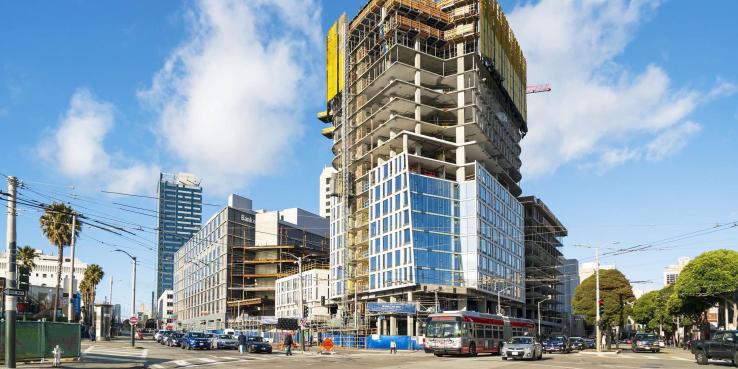San Francisco supervisors are about to vote on a new neighborhood plan that would bring affordable housing, community benefits and open space improvements to a key part of town. The proposed amendment, also known as "The Hub," builds on the Market Octavia Plan, one of the most successful community plans ever drafted in San Francisco.
Completed in 2007, the Market Octavia Plan reclaimed public land where the Central Freeway once stood, creating space for 4,400 new housing units around the intersection of Market Street and Van Ness Avenue. As required in the plan, 25% of the new housing is affordable to people with low incomes, and developers will ultimately contribute $728 million in funding for public benefits. The plan also created a new neighborhood of well-designed public spaces and walking-friendly streets, including improvements to the extensive alley network in Hayes Valley.
The amendment now under consideration aims to increase the public benefits that private development delivers in a critical spot: the easternmost portion of the Market Octavia Plan area. By allowing 1,640 more housing units on 18 targeted parcels clustered around Market Street and Van Ness Avenue, the city would be able to do three things. First, by allowing taller buildings, it would increase the number of affordable housing units created under city requirements. Second, these new units would bring in additional developer fees, providing funding for more public benefits. Third, it’s an opportunity to better coordinate improvements to streets and open space that are being built out by private development projects.
Because the city’s baseline requirements for affordable housing have radically increased in recent years, these parcels would deliver an additional 434 affordable housing units even if the percentage required in the original Market Octavia Plan does not change. The amendment is also anticipated to deliver an additional $235 million for transit and public realm improvements.
Since the amendment effort was first initiated in 2016, market and development conditions have changed. Many of the private projects originally contemplated for this plan went forward with their own environmental studies and individual approvals, seeing that the broader city effort might take longer or get held up in political negotiations. Attitudes about market-rate development have also become increasingly polarized. Although the city is already leveraging private market-rate development interest to create more public benefits, some are calling for the plan amendment to set affordability requirements even higher. Meanwhile, private development is stalling because of skyrocketing construction costs and the need to set rents and home prices higher and higher in order to deliver the existing public benefits requirements.
Transformative changes in the transportation system are also complicating the plan amendment’s passage. Increased reliance on transportation network companies such as Uber and Lyft and growth in shopping, grocery and meal deliveries are changing the way people use public streets and creating concerns about increased density. But thoughtful design decisions, such as loading zones and restrictions for pick-ups and drop-offs in the area, can mitigate the impact of ride-hailing and goods-delivery services. Not to mention that the $235 million for transit and public realm improvements would go along way to making Muni service more efficient and attractive — the best way to keep ride hailing use at a minimum.
With growing numbers of people being displaced or made homeless because of unaffordable rents and home prices, San Francisco needs to take action. Making room for more housing on a small number of sites in a central part of San Francisco where large numbers of people walk, bike and take transit is one thing that the city should do now. There are countless actions that the state and region must take to increase affordability for our residents. But San Francisco ought to demonstrate that it can act responsibly to plan for climate-friendly housing on its own. The way the city can get the most affordable housing and community benefits out of this plan amendment is simple: Pass it as it stands.
